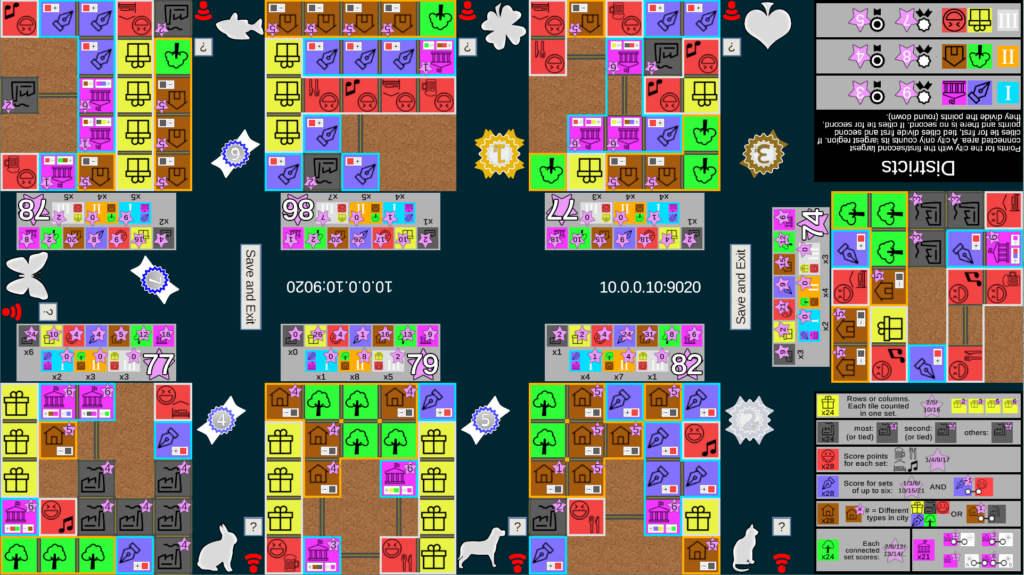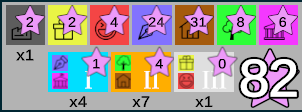I’ve completed a touch table version of Between Two Cities with the Capitals expansion. I had a hard time getting excited about this conversion and it took me two months to put in the 50 hours needed to write the game.
But I’m glad that I finished it. The conversion plays well and it adds another relatively easy 7 player game to the touch table.
 In the board game, players cooperate with their neighbors to build a city between each set of two players. Each round the players pick two tiles and add one to each adjacent city. You want the best cities, but your score is the lower of the two cities you worked on, so you need to keep your cities balanced.
In the board game, players cooperate with their neighbors to build a city between each set of two players. Each round the players pick two tiles and add one to each adjacent city. You want the best cities, but your score is the lower of the two cities you worked on, so you need to keep your cities balanced.
Each type of tile has unique effects and is scored differently. Shops want to be in a line, offices want to be near entertainment, houses want a variety of tile types and don’t want to be next to a factory, etc.
All the tiles are 1×1 except in the middle round where the tiles are 2×1 or 1×2. It can be difficult to find a good tile and position in the second round.
The Capitals expansion adds a “Civics” tile that wants to be near two types and wants to avoid a third type. It also adds points for having the city with the largest “districts”. A district is made up of adjacent tiles of two types. This adds several new considerations for which tiles to pick and where to place them.
There is hidden information in this game (the tiles are hidden while you are selecting the two you want to place) so I created a web interface. I’m still happy using the React framework for building web pages.
There were two things that made this project difficult. The first was the non-standard board. A player interacts with the cities that are between the players instead of with their own pieces and a central board. The second was how the cities are built. Tiles can be placed anywhere adjacent to existing tiles. The only limit is that the city needs to end up being 5×5. So the play area grows out from the initial tile. I ended up creating an 8×8 model where the player only fills in part of the area. The display shows just the part of the city that has tiles. I also had a hard time with the wide/tall tiles. I think that the source of the trouble was not spending enough time thinking through and designing the way tiles would be modeled and moved before I started writing code. I wrote code for the first round where tiles are 1×1 and then forced the wide/tall tiles to fit into that pattern.
I’m not sure why it took me so long to complete this project. I did take a vacation in the middle of the project, but there was also a 10 day period where I was home but didn’t work on it at all, and even when I was working I was only putting in 2-3 hours a day. I definitely felt less excited about this project. I suspect that it was a mix of feeling lukewarm about the game itself and feeling like it should be easier than it was.
The best part of the converted version is how much time is saved scoring the cities. The scoring rules are fairly complex (especially with the Capitals expansion) and it is nice to have the score calculated quickly and correctly. I also display the score of the cities during the game to help the players to balance their cities:

2 thoughts on “Touch table Between Two Cities”